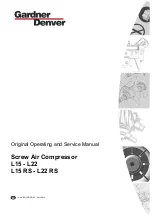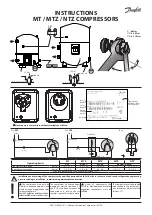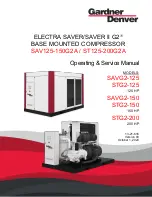
System design recommendations
Off-cycle migration
Off -cycle refrigerant migration is likely to occur
when the compressor is located at the coldest
part of the installation, when the system uses
a bleed-type expansion device, or if liquid is
allowed to migrate from the evaporator into
the compressor sump by gravity. If too much
liquid refrigerant accumulates in the sump it
will saturate the oil and lead to a flooded start:
when the compressor starts running again, the
refrigerant evaporates abruptly under the sudden
decrease of the bottom shell pressure, causing
the oil to foam. In extreme situations, this might
result in liquid slugging (liquid entering the scroll
elements), which must be avoided as it causes
irreversible damage to the compressor.
Danfoss CH scroll compressors can tolerate
occasional flooded starts as long as the total
system charge does not exceed the maximum
compressor refrigerant charge. A suitable test
to evaluate the risk of off –cycle migration is the
following:
• Stabilize the non-running system at 5°C
ambient temperature,
• Raise the ambient temperature to 20°C and
keep it for 10 minutes,
• Start the compressor and monitor sump
temperature, sight glass indication and sound
level.
The presence of liquid in the crankcase can be
easily detected by checking the sump level
through the oil sight glass. Foam in the oil sump
indicates a flooded start.
A noisy start, oil loss from the sump and sump
cool down are indications for migration.
Depending on the amount of migration graduate
measures shall be taken:
• Sump heater
• Liquid line solenoid valve
• Pump down cycle
Sump heater
on
off
on
off
on
off
The surface sump heaters are designed to protect
the compressor against off-cycle migration of
refrigerant.
When the compressor is idle, the oil temperature
in the sump of the compressor must be
maintained at no lower than 10 K above the
saturation temperature of the refrigerant on the
low-pressure side. This requirement ensures that
the liquid refrigerant is not accumulating in the
sump. A sump heater is only effective if capable
of sustaining this level of temperature difference.
Tests must be conducted to ensure that the
appropriate oil temperature is maintained under
all ambient conditions (temperature and wind).
Note that below -5°C ambient temperature and a
wind speed of above 5m/second, we recommend
that the heaters be thermally insulated in order
to limit the surrounding energy losses.
Since the total system charge may be undefined,
a sump heater is recommended on all stand-
alone compressors and split systems. In addition,
any system containing a refrigerant charge in
excess of the maximum recommended system
charge for compressors requires a sump heater.
A sump heater is also required on all reversible
cycle applications.
At initial start-up or after power shortage, it is
recommended to energize surface sump heater
to remove refrigerant 6 hours in advance. A
quicker start-up is possible by “jogging” the
compressor to evacuate refrigerant in the
compressor.
Compressor 1
Compressor 2
Compressor 3
The heater must be energized whenever the
compressor is off to avoid liquid refrigerant
entering the compressor.
Provide separate electrical supply for the heaters
so that they remain energized even when
the machine is out of service (e.g. seasonal
shutdown).
Surface sump heater accessories are available
from Danfoss (see section “Accessories”).
24
FRCC.PC.026.A4.02
Application Guidelines
















































